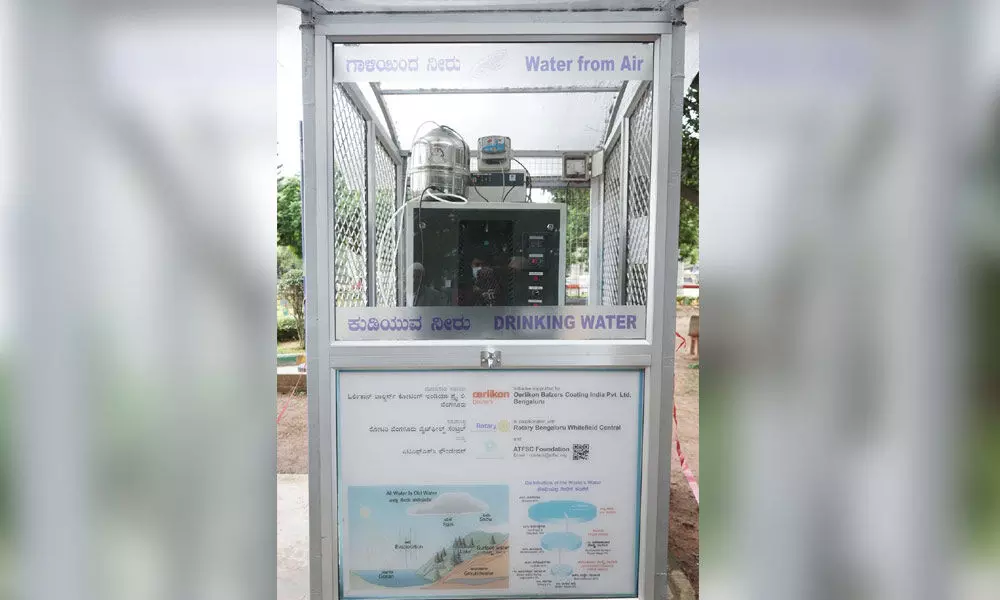Live
- Exhilarating ‘Benchmark’ of Venkat Changavalli
- Development activities worth `30 cr launched in Puthalapattu constituency
- Allegations against KTR baseless: BRS leader
- Megastar Chiranjeevi to Visit Allu Arjun’s Residence at 12 PM Today
- Nilima Rane: Trailblazer in Nursing
- Casual yet stylish office outfits for all-day comfort
- TTD to suspend all special darshans from January 10 to 19 amid Vaikuntha dwara darshans
- Naidu pats TDP leaders, cadres for enrolling 73L members
- Rupali Ganguly says for 20 years she never got an award
- Advanced anti-drone systems deployed for devotees’ safety at Mahakumbh
Just In
Harvesting drinking water from the air!


Harvesting drinking water from the air!
Claiming a new and innovative method of water harvesting, Jawaharlal Nehru Planetarium (JNP) installed a working model of the MEGHDOOT Atmospheric Water Generators (AWG) on its premises on Friday morning
Bengaluru: Claiming a new and innovative method of water harvesting, Jawaharlal Nehru Planetarium (JNP) installed a working model of the MEGHDOOT Atmospheric Water Generators (AWG) on its premises on Friday morning.
The project is the brainchild of NPO, ATFSC Foundation and the initiative has been sponsored by Oerlikon Balzers and implemented by Rotary Bangalore Whitefield Central.
The AWG utilises an advanced technology to extract water from the moisture in the air. The technology is a step forward to meeting the growing water demands in cities and towns in India. Approximately 76 million people do not have access to clean drinking water in the country. As per reports, the earth's atmosphere consists of 37.5 million gallons of water vapour that can be tapped into drinking water. This innovative technology is the right step in creating sustainable methods for water delivery.
The unit established in JNP has a capacity of 150 litres and is primarily going to be used as a drinking water facility. But the company also manufactures units with bigger capacities and is aiming to make a unit with a one million litre capacity.
In the pandemic time, the technology also promises to provide pathogen-free drinking water. "As pathogens are transmitted from human contact, the water is free from any contamination. After extracting the water, the harvested water is further passed through various iterations before being made available to drink," said Director of ATFSC, Chander Mannar.
The AWG has various other applications in the field of agriculture and fire relief work where the water source is not found nearby. These units can be propped anywhere and using solar energy, water can be generated.
This also brings down the cost of distribution of water by exempting transportation charges, bringing the water down to an average of Rs 3 per litre as compared to Rs 20 per litre now. With very little fossil fuel being consumed in transportation, it's also the method with the least carbon footprint.
Additionally, the unit also has a feature where you can alter calcium and magnesium content in the water as per requirement. Favoured by the feature, a unit was also established at the KR Hospital for providing water to pregnant women who need additional amounts of these two elements.
"JNP hopes to showcase to the students coming to the planetarium a working model of AWG as an addition to the scientific marvels that exist in the premises. Children will be able to see the demonstration of the technology and use it as a drinking facility" said Director of JNP, Pramod Galgali.

© 2024 Hyderabad Media House Limited/The Hans India. All rights reserved. Powered by hocalwire.com






